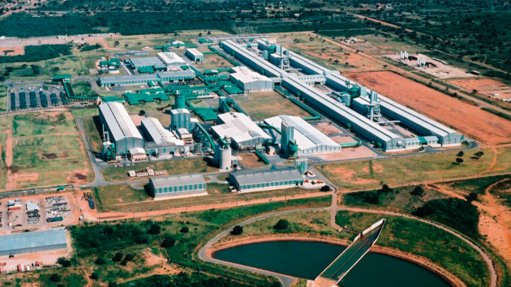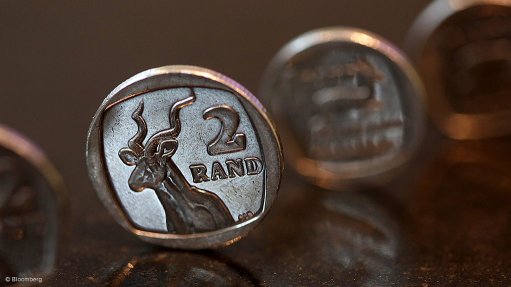Climate change: Part 2
In last week’s instalment of this column, I wrote that climate change is real, if only because, in Norway, large patches of ice have melted and given up artefacts such as iron arrowheads and tunics from the Iron Age, besides others. This shows two things: that Norway has become warm enough to melt ice, which has not happened in recent times, and that the discovery of the artefacts shows that the ice has melted before – this is not the first time.
I also referred to Barack Obama, who stated that 97% of scientists agree that climate change is “real and man-made and dangerous”. I noted that he probably meant climate scientists, not scientists. I certainly disagree that the figure is 97%. In a survey conducted by the American Meteorological Society, 63% of 1 854 members questioned were convinced that climate change was real and man-made and 38% were unconvinced.
Very different statistics. So, unless the ground is getting warmer in Norway, the air is getting warmer. So it is real. But wait! What about the ground getting warmer? There are reports from all over the world about the permafrost (ground that has been frozen for more than two years) melting. This is more likely to happen if the ground is warming than if the air is a few degrees warmer. We will get back to this.
Assume the air is warming. Is climate change man-made? Those ‘convinced’ say it is all about the carbon dioxide (CO2) in the atmosphere apparently increasing. This opens the big issue of greenhouse gases and CO2. It happens that CO2 is only 4% – or 400 parts per million (ppm) – of all greenhouse gases, the others being water vapour (about 50 000 ppm) and methane and ozone and nitrogen oxides, all less than 2 ppm.
Those who state that CO2 is the main culprit for climate change use terms like ‘belch’, ‘spew’ and ‘vomiting’ when they describe the emission of CO2 from power stations and motor cars and aircraft. I will just use the term ‘emit’. Let us assume, as those convinced do, that it is possible to heat up the Earth’s atmosphere. That we can do it. Could we just use a big heater? No problem, we have already tried: from 1945 to 1996, a total of 2 476 nuclear devices (as in bombs) were detonated in tests, giving a total yield of 540 849 kilotons of TNT equivalent. (Note to Natal graduates: TNT is trinitrotoluene, an explosive. TnT, common in KwaZulu-Natal, is Tequila and Tonic, an alcoholic shooter.)
The US exploded 1 132 bombs and, in descending order, so did the former Union of Soviet Socialist Republics, the UK, France, China, India, Pakistan and North Korea. Now, 540 849 kilotons of TNT equivalent has an energy value of 2.26 1 015 kJ. To release this energy, you would have to operate a 1 353 MW heater for 53 years. The energy of the sun striking the Earth is about 174 000 000 000 MW, so the energy released by the bombs is very small, compared with the sun.
A heater won’t really work. Thus, if we can’t cook up the Earth with atom bombs, what else? We could block out the sun, which would reduce the energy used to heat the atmosphere. Historically, this has also happened: In 1883, the island of Krakatoa, near Java, blew up. It released an energy equivalent of 200 megatons of TNT equivalent. The explosions hurled an estimated 11 cubic miles (45 km3) of debris into the atmosphere, darkening skies up to 442 km from the volcano. In the immediate vicinity, the dawn did not return for three days. Within 13 days, a layer of sulphur dioxide and other gases began to filter the amount of sunlight able to reach the Earth. Average global temperatures were as much as 1.2 ºC cooler for the next five years.
So, it seems you cannot cook up the atmosphere but blocking the sun does reduce temperatures. Which is global cooling, not warming. So, where does CO2 fit in? Part 3 next week.
Article Enquiry
Email Article
Save Article
Feedback
To advertise email advertising@creamermedia.co.za or click here
Comments
Press Office
Announcements
What's On
Subscribe to improve your user experience...
Option 1 (equivalent of R125 a month):
Receive a weekly copy of Creamer Media's Engineering News & Mining Weekly magazine
(print copy for those in South Africa and e-magazine for those outside of South Africa)
Receive daily email newsletters
Access to full search results
Access archive of magazine back copies
Access to Projects in Progress
Access to ONE Research Report of your choice in PDF format
Option 2 (equivalent of R375 a month):
All benefits from Option 1
PLUS
Access to Creamer Media's Research Channel Africa for ALL Research Reports, in PDF format, on various industrial and mining sectors
including Electricity; Water; Energy Transition; Hydrogen; Roads, Rail and Ports; Coal; Gold; Platinum; Battery Metals; etc.
Already a subscriber?
Forgotten your password?
Receive weekly copy of Creamer Media's Engineering News & Mining Weekly magazine (print copy for those in South Africa and e-magazine for those outside of South Africa)
➕
Recieve daily email newsletters
➕
Access to full search results
➕
Access archive of magazine back copies
➕
Access to Projects in Progress
➕
Access to ONE Research Report of your choice in PDF format
RESEARCH CHANNEL AFRICA
R4500 (equivalent of R375 a month)
SUBSCRIBEAll benefits from Option 1
➕
Access to Creamer Media's Research Channel Africa for ALL Research Reports on various industrial and mining sectors, in PDF format, including on:
Electricity
➕
Water
➕
Energy Transition
➕
Hydrogen
➕
Roads, Rail and Ports
➕
Coal
➕
Gold
➕
Platinum
➕
Battery Metals
➕
etc.
Receive all benefits from Option 1 or Option 2 delivered to numerous people at your company
➕
Multiple User names and Passwords for simultaneous log-ins
➕
Intranet integration access to all in your organisation


















